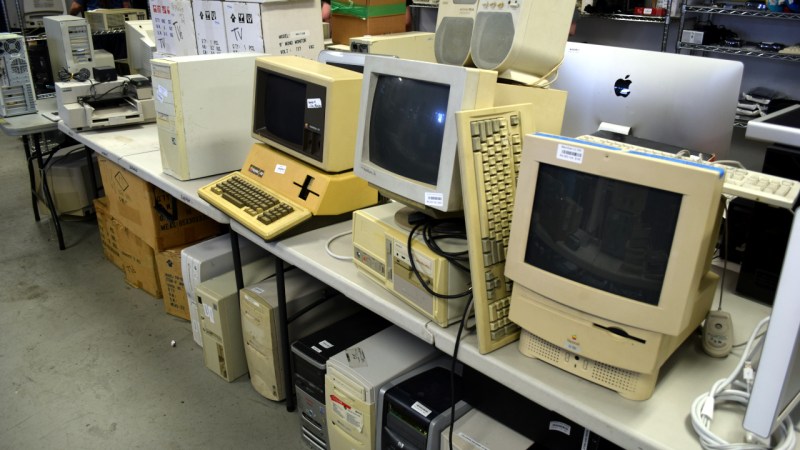
The Vintage Computer Festival East took place last weekend at the InfoAge Science and History Museum in New Jersey, and by any metric you care to use, it was a phenomenal success. Everyone you spoke with, from the the exhibitors and attendees, to the veteran volunteers who put this incredible show together, all said the same thing: they’d never seen a turnout like this before.

Of course, such success is not without cost. The exhibit rooms were so packed that moving through them was a challenge, the line to get food or browse the consignment area occasionally stretched outside the building, and at one point the event’s electronic payment system buckled under the pressure.
Yet even the folks who waited the better part of an hour to rummage through boxes of dusty treasures, only to find themselves left standing with armfuls of heavy gear they couldn’t pay for until the technical issues were resolved couldn’t really complain. I should know, I was one of them. It would be like going to a concert and getting upset that the music was too loud — the event was advertised as a festival, and that’s exactly what it was.
No matter where you went, you’d find throngs of excited people who were eager to chat about the golden age of computing. So even if you were stuck in a long line, or had to step outside of the exhibit area to get some fresh air, you were always in excellent company. Seeing such a large and diverse number of people come out for what’s ultimately a niche event was exceptionally gratifying. At the end of the day, if the price we have to pay for this kind of community response is a few long lines and tight squeezes, it’s well worth it.
Each time I cover an event like this for Hackaday, I do so with the caveat that there’s really no substitute for being there in person. No matter how many articles you read and YouTube recaps you watch, you’ll never be able to see all the things you would have had you been able to walk the show floor yourself. It’s a bit like exploring the Moon or Mars: remotely controlled robots are capable of capturing terabytes of data and beaming it back to Earth, but even still, there’s the potential to learn so much more by putting boots on the ground.
The same is true of VCF East 2023 — what I bring you here is just the tip of the iceberg in terms of what was on display at this year’s event. On the other hand, you have the advantage of being able to peruse these images without having to stand in line. Is it worth the trade? Only you can be the judge of that. But for my money, I’ll gladly get back in line when VCF East 2024 rolls around.
Forgotten Cable TV Tech
For many, especially of the younger generations, the term “television” means something very different than it did a few decades ago. Even if they’re watching a show on an actual TV rather than their phone or computer, the content itself is almost certainly being delivered on-demand over the Internet through one of the major streaming services. For them, the technology that allowed cable providers to “scramble” unpaid premium channels in the 1980s and 90s is as arcane as the first transatlantic telegraph cable.
 But those of us who’ve gone around the sun a few more times may remember late nights trying to watch something you weren’t supposed to through frantic technicolor waves of distortion. Sometimes the image would appear perfectly clear for a second or two, only to immediately return to a fever dream of colors and shapes. Yet despite its maddening randomness, the cable company could restore the channel to crystal clarity…for a price.
But those of us who’ve gone around the sun a few more times may remember late nights trying to watch something you weren’t supposed to through frantic technicolor waves of distortion. Sometimes the image would appear perfectly clear for a second or two, only to immediately return to a fever dream of colors and shapes. Yet despite its maddening randomness, the cable company could restore the channel to crystal clarity…for a price.
In their exhibit Behind the Screens, the team behind the impressive WeatherStar hacking we’ve covered previously turn their attention to the nuts and bolts of the cable TV system, including the scramblers that kept untold late-night programs hidden from prying young eyes.
The interactive display demonstrated two forms of scrambling: one which injected additional noise into the signal and could be defeated with a simple passive filter on the customer’s incoming cable line, and a more sophisticated method which reduced the amplitude of the horizontal sync pulses so that a TV couldn’t turn the signal into an intelligible image. The latter could overcome with a set-top converter, which at first could only be obtained through the cable TV provider, but which was inevitably cloned by pirates.
At the press of a button built into the display the scrambler’s appropriate countermeasure could be activated, instantly clearing the image. Oh what I would have given for a such a button 30 years ago…
Colossal Cave Returns
Under normal circumstances, seeing various old computers running some permutation of Colossal Cave Adventure at VCF wouldn’t be out of the ordinary. In fact, it’s almost exactly the sort of thing you expect to see. But even so, the fact that they were all lined up on one table seemed a bit suspicious. Things become a bit more clear when you notice the nearby table of branded swag, and realize this collection of machines was gathered to commemorate the recent release of a modernized version of the game.
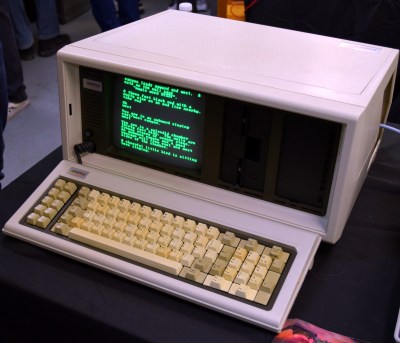
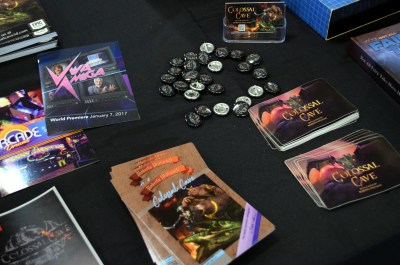

Helmed by Roberta Williams, co-founder of Sierra Entertainment and the creator of the King’s Quest series, this latest take on the classic leaves the text prompt behind for 3D visuals and is available on both computer and game consoles. There’s even a VR version available, if you’ve got the appropriate hardware. There was actually a VR setup there for attendees to play the new Colossal Cave, but in true VCF style, there were far more people waiting to take their turn tapping commands into the original game than seemed interested in exploring the titular cave with modern tech.
Keeping Voja’s Dream Alive
While there’s already plenty of overlap between the Hackaday and retrocomputer communities, there was one particular machine tucked away in the corner of the VCF exhibit hall that falls in the exact center of that particular venn diagram: a modern recreation of Voja Antonić’s Galaksija.
Built by Vlado Vince and part of his Yugoslav School Computers exhibit, this version of the DIY Z80 computer features some niceties such as a 3D printed case and an updated two-layer PCB released by Voja in 2020. Eventually, Vlado says he’d also like to develop a WiFi-to-serial adapter for the computer, as he’s done for the Yugoslavian Orao.
Seeing a Galaksija would be interesting enough, but that’s not where this story ends. When Vlado set up his table at VCF, he ended up sitting right next to Andy Geppert, who brought his Supercon 2022 badge along with him. This chance encounter meant that two computers designed by Voja Antonić, separated by 40 years, ended up within a few feet of each other — providing for a very unique photo opportunity and a great story to entertain attendees with.
Random Access Memories
As I said in the intro, there’s simply no way to describe all the exhibits I saw during VCF East 2023. Even this gallery of photographs represents just a fraction of what was on display, but will hopefully give you an idea of how much classic computing technology was crammed into one building.
If these pictures don’t make you excited to see what’s in store for VCF East 2024, nothing will.
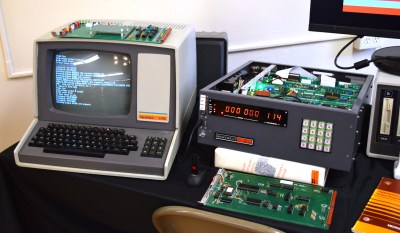
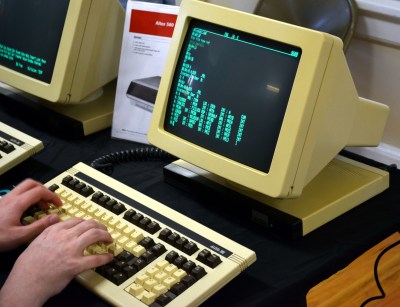
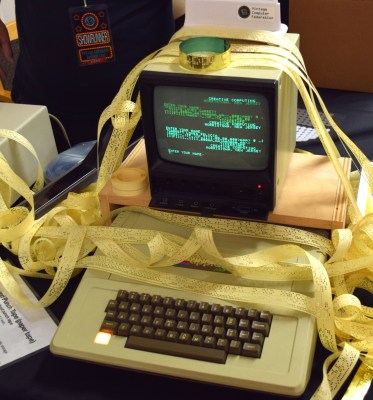

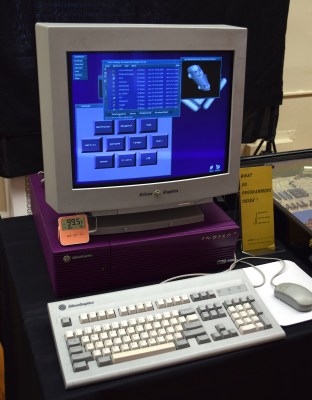
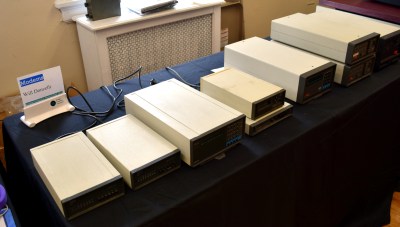
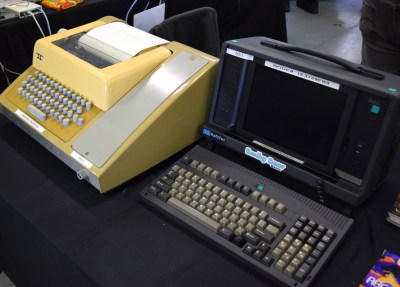
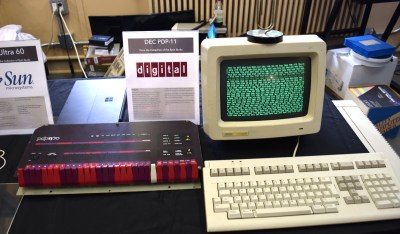
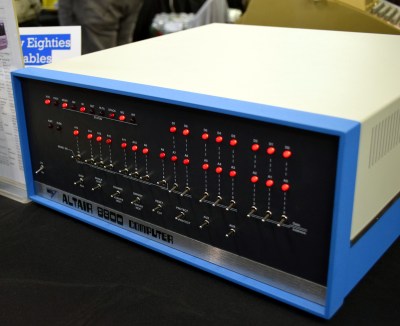
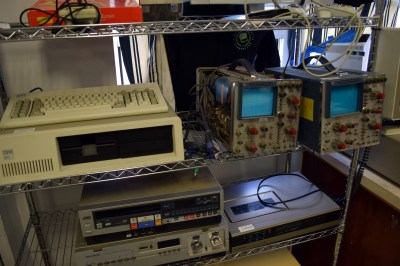
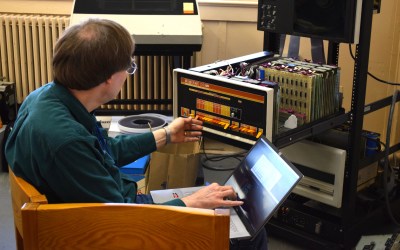




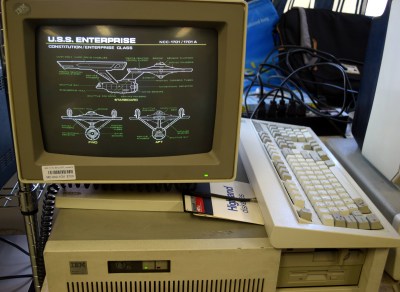
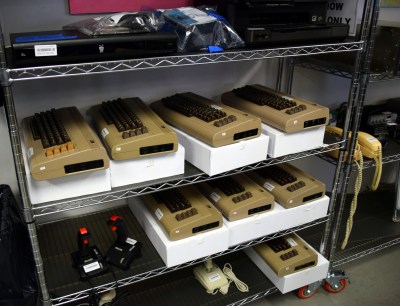

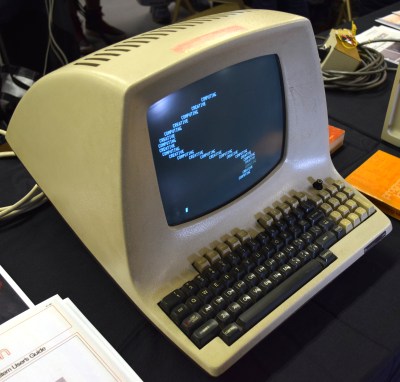
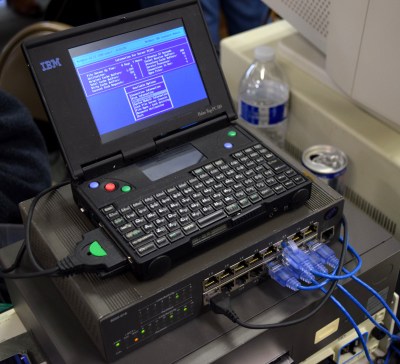
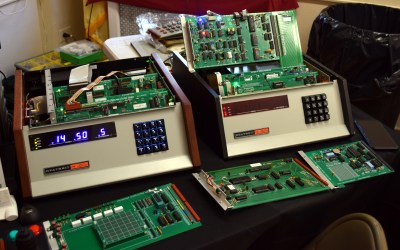
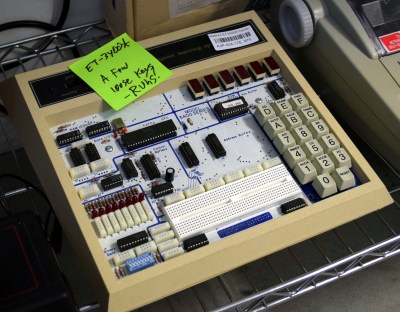

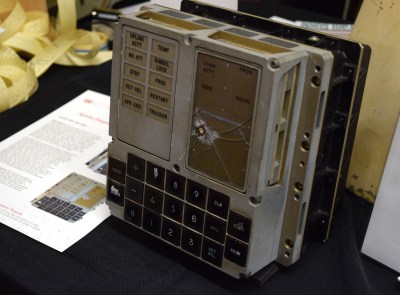
More to Come
Vintage Computer Festival East 2023 was simply too large of an event to cover in just one post. Stay tuned for more coverage from this incredible event, including video interviews with some of the exhibitors and speakers that provide a unique glimpse into their individual passions for retro tech.
Vintage Computer Festival East was a Retro Madhouse
Source: Manila Flash Report
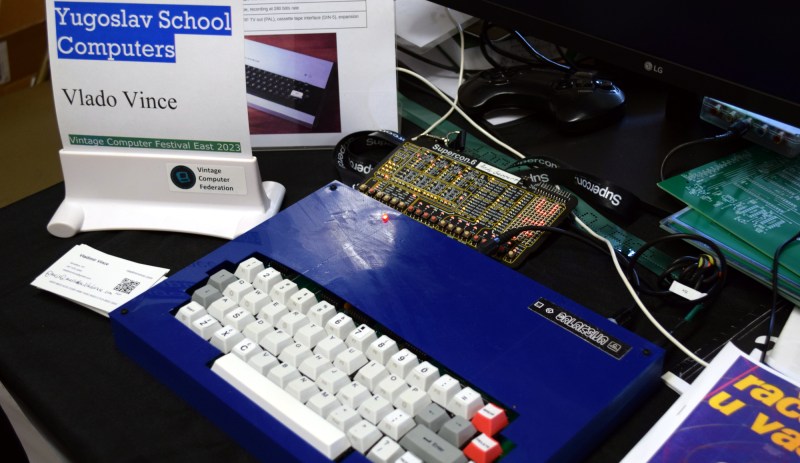
0 Comments